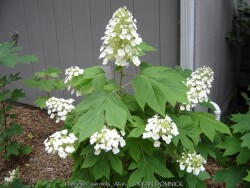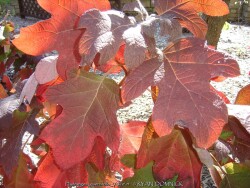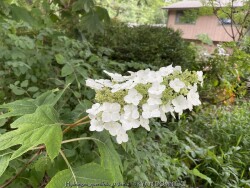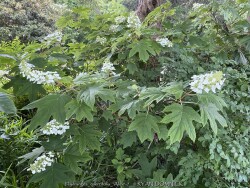









Plant Min Zone: 5a
Plant Max Zone: 9b
Sunlight: Full Sun, Part Sun, Shade
Water / Rainfall: Average, High
Soil Quality: Average, Rich
Bloom Season: Early Summer, Summer
Flower Color: White, Pink, Multi-Colored
Berry / Fruit Color: Red, Mauve
Spring Foliage Color: Green
Summer Foliage Color: Green
Fall Foliage Color: Reddish Purple, Red, Orange
Evergreen Foliage: No
Winter Interest: Yes
Scented Flowers: No
Drought Tolerance: Medium
Wet-Feet Tolerance: Medium
Humidity Tolerance: Medium, High
Wind Tolerance: Low, Medium
Poor Soil Tolerance: Acidic Soil (low PH)
Height: 5' - 7'
Width: 5' - 7'
Growth Rate: Medium
Service Life: Very Long: 10-20 years
Maintenance Need: Low
Spreading Potential: Medium
Yearly Trimming Tips: Trim Shrub to Desired Size After Bloom in Late Spring or Summer: Blooms on Old Wood.
Plant Grouping Size: Specimen Planting of 1-3, Small Grouping of 3-5, Medium Grouping of 5-10
Best Side of House: East Exposure, North Exposure
Extreme Planting Locations: None
Ornamental Features: Multiple Seasons of Interest, Long Blooming Season, Long Lasting Fall Color, Large Tropical Foliage / Flowers, Exceptional / Colorful Foliage
Special Landscape Uses: Hedge Row
Possible Pest Problems: Deer, Rabbits
Plant Limitations: Needs Thick Winter Mulch, Needs Regular Irrigation, Susceptible to Late Spring Frosts, Susceptible to Juglone / Black Walnut
Shippable in 2026: YES
***Shrub descriptions available with future update!*** Hydrangea quercifolia 'Alice' is also known as Alice Oakleaf Hydrangea >>>>>>>>>>>>Oakleaf hydrangea (Hydrangea quercifolia) is a large coarse-textured deciduous shrub growing to 3-10 feet tall with an open crown native to the southeastern United States. Cone-shaped flower clusters emerge bright white in mid-summer. Flowers age to progressively darker shades of pink and by autumn and become persistent dried flower-heads in winter. The leaves are dark green on top and silvery-white underneath. Plants in shade have larger leaves than those grown in sun. In sun, if drought stress occurs, foliage becomes tattered, burnt, and yellowish; ruining potential fall color. The leaves of healthy plants turn rich shades of red, bronze and purple in autumn that persist until about 25 degrees F usually into late November in Kansas. The plant slowly sprouts shoots from underground stolons and often grows in colonies in ideal conditions but this is rare in Kansas. Young stems are covered in a felt-like light brown bark while the larger stems develop an attractive cinnamon-tan-orange bark that shreds and peels in thin flakes. Hydrangea quercifolia is best grown in rich, medium moisture, well-drained soils in part shade. Drought and full sun tolerance are average but greatly improved with rich, moisture-retentive foresty soils. Plant near gutter downspouts for an extra boost of water. It will tolerate drought, but may not flower. In Eastern Kansas, Cold tolerance is no problem. No significant disease or pest problems. Of all the hydrangeas, this is probably the toughest! Several improved cultivars have been developed.